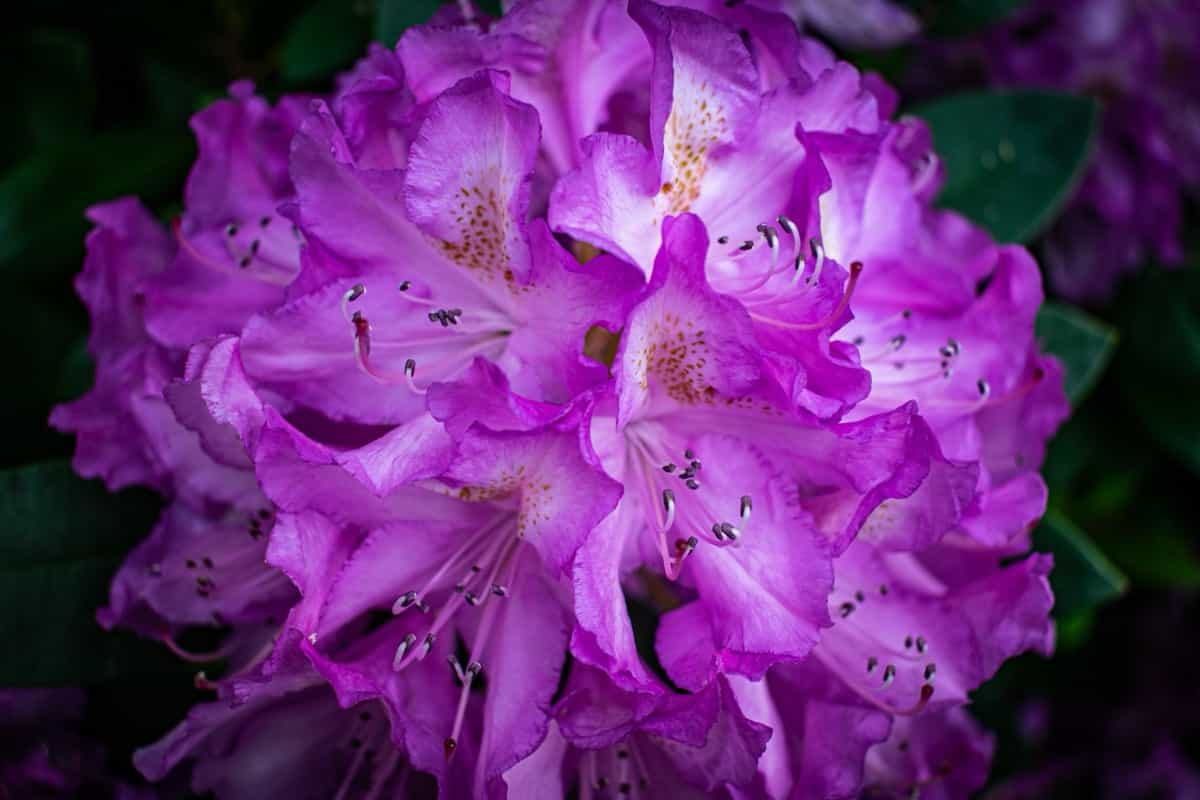Controlling pests on Azalea plants is essential to maintaining their beauty and health. In this comprehensive guide, we’ll explore natural and organic methods to eliminate unwanted pests. From understanding common culprits to implementing effective strategies and utilizing eco-friendly solutions, we’ll cover all you need to know for Azalea pest control.

How to Control Azalea Pests Naturally
What is Azalea Crop?
Azaleas are a famous group of ornamental shrubs known for their vibrant, showy flowers. They belong to the Rhododendron genus and come in various colors, making them a prized choice for gardens, landscapes, and potted plants. Azaleas thrive in acidic soils and are highly valued for their attractive blooms, which typically appear in spring. However, these beautiful plants can fall victim to various pests that compromise their health and appearance.
Characteristics of Azalea Crop
- Produce large, colorful trumpet-shaped flowers in various colors.
- Can be evergreen or deciduous, retaining leaves year-round or shedding in fall.
- Prefer acidic soils with pH levels between 4.5 and 6.0.
- Come in various growth forms: upright bushes, mounding varieties, and small tree-like forms.
Understanding Azalea Pests: Identifying Common Culprits and Their Damage
- Azalea Lace Bug: Infests azalea leaves, causing a stippling or mottled appearance. Severe infestations can lead to leaf discoloration and reduced plant vigor.
- Azalea Caterpillars: create irregular holes and defoliation by chewing on leaves.
- Spider Mites: Weave delicate webs on leaves, causing stippling and weakened appearance.
- Scale Insects: Attach to stems and leaves, feeding on sap and secreting honeydew, leading to sooty mold growth and deformed leaves.
- Whiteflies: Gather on foliage, causing leaf yellowing and reduced growth.
- Mealybugs: Congregate on stems and leaves, causing stunted growth and sooty mold.
Prevention is Key: Implementing Effective Strategies to Control Azalea Pests
- Selecting Resistant Varieties: When choosing azalea varieties for your garden, opt for those known for pest resistance.
- Proper Planting: Plant azaleas correctly, ensuring they are positioned in well-drained, acidic soil with appropriate spacing.
- Regular Inspection: Inspect your azaleas for signs of pest activity, such as discolored leaves, webbing, or unusual spots.
- Good Garden Hygiene: Remove fallen leaves and debris around your azaleas, as they can harbor pests.
- Pruning and Thinning: Prune your azaleas to increase air circulation and sunlight penetration, which can deter some pests.
- Companion Planting: Consider planting pest-repelling companion plants near your azaleas, such as marigolds or chrysanthemums.
In case you missed it: How to Control Violet Pests Naturally: How to Get Rid of Them with Natural and Organic Treatment

Natural Remedies for Azalea Pest Control: Harnessing the Power of Companion Planting
- Marigolds: Marigolds are a good companion for azaleas because of their reputation for keeping various garden pests at bay.
- Chrysanthemum: Chrysanthemums contain pyrethrin, a natural insecticide. Planting them near your azaleas can help deter pests.
- Nasturtium: Nasturtiums are excellent companions, as they can deter aphids and other insects from attacking your azaleas.
- Rosemary: Fragrant rosemary helps ward off pests like spider mites and aphids.
- Garlic: Planting garlic near your azaleas can deter several pests, including aphids and caterpillars.
Organic Treatments for Azalea Pests: Utilizing Safe and Environmentally Friendly Solutions
- Insecticidal Soap: Insecticidal soap, made from soap and water, is a safe solution for controlling soft-bodied pests on azaleas.
- Diatomaceous Earth: This fine powder, made from fossilized algae, can be applied to azalea foliage to kill hard-bodied pests by piercing their exoskeletons.
- Bacillus Thuringiensis (Bt): Bt is a bacterium that infects and kills caterpillar pests. It’s safe for humans, animals, and beneficial insects.
Creating a Healthy Garden Ecosystem: Attracting Beneficial Insects to Combat Azalea Pests
- Ladybugs: Ladybugs attack aphids and other soft-bodied pests with great voracity.
- Lacewings: Lacewings feed on aphids, caterpillars, and other garden pests.
- Parasitic Wasps: These wasps parasitize caterpillars and other insect pests.
- Hoverflies: Hoverflies prey on aphids and can also be pollinators for your azalea blooms.
Homemade Pest Repellents: DIY Recipes to Deter Azalea Pests Naturally
- Garlic and Pepper Spray: Add a quart of water, a teaspoon of cayenne pepper, and several cloves of garlic to a blender. After straining the mixture, stir in a few dish soap drops. This spray can help deter pests like aphids.
- Soap and Oil Spray: Mix a tablespoon of vegetable oil, a tablespoon of mild liquid soap, and a quart of water. Shake well and spray on azaleas to control soft-bodied pests.
Physical Barriers and Traps: Physical Methods to Keep Azalea Pests at Bay
- Row Covers: Use row covers to physically block pests from reaching your azaleas. This is especially effective for preventing early-season infestations.
- Sticky Traps: Traps near your azaleas can catch flying pests like whiteflies and thrips.
- Hand-Picking: Regularly inspect your azaleas and hand-pick any visible pests, like caterpillars or scale insects.
In case you missed it: How to Control Carambola Pests Naturally: How to Get Rid of Them with Natural and Organic Treatment

Soil Management Techniques: Enhancing Soil Health to Reduce Azalea Pest Infestations
- Proper pH: Maintain the correct soil pH (acidic) to ensure your azaleas receive the nutrients they need.
- Mulching: To improve soil quality, stop weed growth, and retain moisture in the soil, mulch your azalea plants with organic material.
- Compost: Regularly add compost to your soil to enhance its structure and provide a source of beneficial microorganisms.
Proper Watering and Fertilization Practices: Maintaining Vigorous Azaleas to Resist Pests
Proper watering and fertilization practices are crucial for azalea’s health.
- Consistent Moisture: Azaleas prefer constant soil moisture. Water them thoroughly and mulch to retain moisture, but avoid waterlogged soil.
- Fertilization: Use a balanced, slow-release fertilizer specifically formulated for acid-loving plants to ensure azaleas receive essential nutrients.
Integrated Pest Management (IPM) for Azaleas: A Holistic Approach to Pest Control
- Check them frequently for damage and note which individual pests are causing problems.
- Implement preventive measures, such as selecting resistant varieties and using good garden hygiene.
- Encourage and protect beneficial insects, such as ladybugs, lacewings, and parasitic wasps, by planting nectar- and pollen-rich flowers.
- Adjust cultural practices, such as pruning and thinning, to create an environment less favorable to pests.
- Use natural and organic treatments, such as neem oil, insecticidal soap, and diatomaceous earth, when necessary.
- Use physical barriers like row covers and sticky traps to prevent pests.
- Maintain healthy soil water consistently, and use a balanced fertilizer.
- Take timely action when detecting pest activity or damage.
Azalea Pests and Control Methods
| Pest | Control Methods |
| Azalea Lace Bugs | Neem oil Insecticidal soap Strong water spray |
| Azalea Caterpillars | Hand-pick caterpillars Apply Bt (Bacillus thuringiensis) |
| Spider Mites | Neem oil Insecticidal soap Strong water spray |
| Scale Insects | Prune and remove heavily infested branches Treat with neem oil |
| Whiteflies | Control with neem oil Use insecticidal soap |
| Mealybugs | Use neem oil Apply insecticidal soap |
In case you missed it: How to Control Guava Pests Naturally: How to Get Rid of Them with Natural and Organic Treatment

Frequently Asked Questions (FAQs) for Azalea Crop
How Do I Know If My Azaleas Are Infested with Pests?
Look for signs of pest damage, such as discolored or chewed leaves, stippling, webbing, or the presence of pests themselves. Regular inspection is vital to early detection.
Can I Use Chemical Pesticides on My Azaleas?
To reduce the impact on the environment and beneficial insects, it is advisable to investigate natural and organic treatments and prevention approaches, even though chemical pesticides remain an alternative.
When Is the Best Time to Apply Treatments for Azalea Pests?
Treatments are most effective when applied at the first sign of pest activity or damage. Regular monitoring and preventive care are essential for pest control.
Conclusion
Effectively managing pests on your azaleas is crucial for maintaining their health and aesthetic appeal. Natural and organic treatments, preventive strategies, and a healthy garden ecosystem can help ensure your azaleas remain vibrant and pest-free.
- Deworming Schedule for Dogs/Puppies: A Beginners Guide
- How to Prevent and Control Parasites in Goats
- Beneficial Insects in Pest Management
- Natural Solutions for Pest Control in Flower Gardens
- Types of Fungicides Used in Agriculture
- Common Issues in the Fruit Development Stage of Pomegranate Farming
- Fruit Development Issues in Papaya: Easy Solutions and Treatment
- Soil-Borne Diseases and How to Protect Your Plants
- Practices to Prevent Disease Spread in the Garden